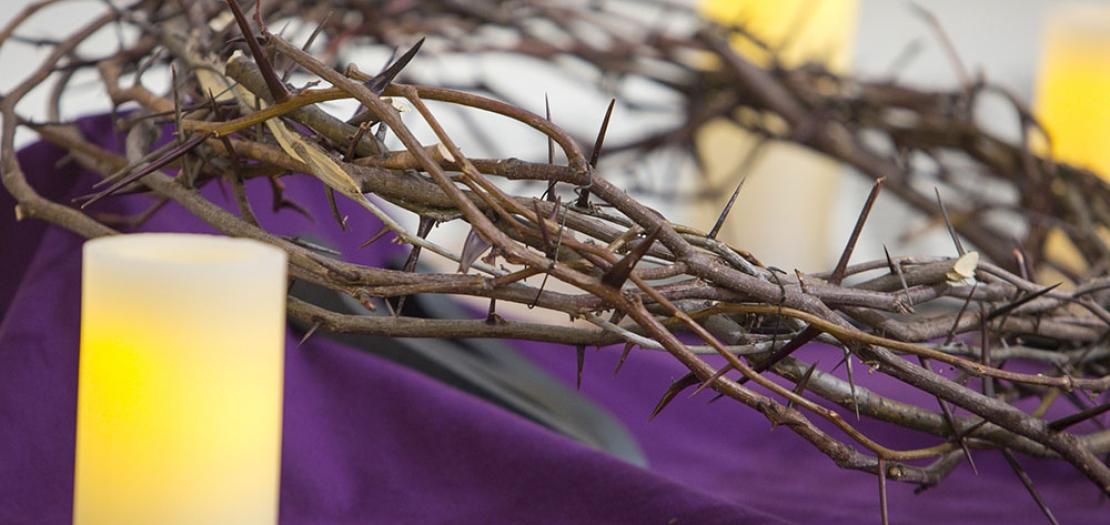Issued by the Catholic Center for Studies and Media - Jordan. Editor-in-chief Fr. Rif'at Bader - موقع أبونا abouna.org

Following is the text of the meditation by Latin Patriarch of Jerusalem His Beatitude Pierbattista Pizzaballa for the fourth Sunday in Lent, Year A, March 19, 2023:
The Gospel passage of today’s Liturgy, the Fourth Sunday of Lent, gives us the event of the healing of the man born blind (John 9:1-41).
It’s a very long passage, and to deal with it let’s study the structure a little: we see then the first part (9:1-12) wherein the miracle itself is related; then comes the second part, the longest (John 1:13-34) which has as its protagonists, next to the healed blind man, the Pharisees with their attack on Jesus and their questions about the miracle that He has done; while in the third (John 1:35-41) Jesus meets the blind man again, and the account closes with Jesus’ judgment on those who presume to see.
In the first part, He heals the blind man; instead, in the second the Pharisees refuse to believe and they sink into an increasingly dark blindness.
In part one the blind man finds sight and begins a new life that will lead him to believe and be saved; in part two, the Pharisees increasingly close themselves in their pretext of knowing the truth, and they are far away from it.
In these three parts there are two sets of terms that recur, that form a small unifying factor, giving the key to the story.
The first set of terms is linked to seeing or to being blind: Jesus meets a blind man, the man is healed, and starts to tell everyone what happened to him: before I was blind and now I see. In the course of the passage, he will repeat it at least four or five times.
The second set is linked to the idea of sin and guilt. Immediately, the issue surfaces, from the earliest verses, and will follow the entire passage, until the end. The first to talk about it are the disciples, who in front of the blind man ask Jesus who has sinned, whose is the fault of this misfortune. And they make two hypotheses: either the fault is his, or his parents (v.2).
Then the Pharisees continually speak of sin and guilt, who do not seem be able to find anything else than to find a guilty party. They readily find it in the blind man (v.34), but then they also use the term “sinner” of Jesus: they speak of Him at length, but they never call Him by name, limiting themselves to curtly address him just as “sinner” (v.24). In the Gospel according to John, this term is only used here, in this chapter.
This illness-guilt connection – where if a person does not see it means that he has committed a mistake – is a subtext in the entire passage, and was a popular common view at that time. And maybe, even today, this way of thinking has not disappeared in our different cultures.
Well then, Jesus completely overturns this logic, behind which is a picture of God who chastises and punishes. The illness – according to Jesus – not only does it not result from sin, but it can actually be a privileged place of God’s revelation: Jesus says it here (v.3) and repeats it in the incident of the resurrection of Lazarus: “This sickness is not unto death, but for the glory of God: that the Son of God may be glorified by it” (Joh 11:4). Sin is established there, not where there is sickness, but where one refuses to believe in the revelation of God, to believe in His Mercy, which always operates, even outside our plans, and indeed also on the Sabbath. Sin is there where one does not recognize real blindness, and one refuses to allow oneself to be healed of it.
The healed man opens himself to this evidence, he simply recognizes that he has been healed, and even if at the beginning he does not know anything of Jesus except the name (vv.11-12), he remains steady in simply attesting what has happened to him: “I was blind, and now I see”.
The Pharisees, instead, strive in every way to deny this reality, which is plain for all; they strive to not see it. And in doing this they defend, attack, and look for pretexts… They are blind, but they don’t know it.
The healed man becomes increasingly himself, more and more free, true and without fear. He addresses the Pharisees with simplicity, even with irony, and he faces the consequence, expulsion, for his adherence to the truth that has taken place in him. The Pharisees instead become increasingly petty, more divided among themselves, less believable, less believing.
Why do they do this? The exact diagnosis of their sickness is produced in them by the same blindness: “I told you already and you did not hear: why do you desire to hear again? (v. 27)
This is the Pharisees’ problem, their inability to listen to someone other than themselves, their own convictions, their laws. But listening is the unique condition to truly recognize God, to open oneself to Him: only those who listen, see.
In fact, at the end, Jesus reveals Himself to the healed as the One Who speaks, and significantly uses the same expression with him that we heard last Sunday in the dialogue with the Samaritan woman: “I am the One, Who speaks with you.” (John 4:25)
When Jesus discovers that the healed man has been expelled, He seeks him out. He attempts to speak with him, because healing becomes salvation only within a dialogue: the dialogue makes the relationship personal, and this is salvation.
Then, when the man sees Jesus Who speaks to him, he makes a profession of faith and prostrates himself adoring Him (v.38): it is the climactic point of the passage.
And it is also the climactic point of the Lenten journey, which has for its goal the Baptismal profession of faith in the Easter Vigil. But that is possible only to those who humbly accept the reality of really being blind, and to those who welcome the One Who descended into the abyss to restore light to us.
The journey of faith, finally, requires a painful passage, that of solitude: the blind man is, in some way, ignored by his family and expelled from the Synagogue. It does not necessarily mean that the same thing must happen to us, but that Jesus is encountered outside the narrowness of our certainties, of our thought patterns… The Pharisees were unable to leave them, and did not grasp the great event that was before them. Surely they could see, they had sight, but they could not see Him, they could not recognize Him and the truth that was in front of their eyes. It also means that one encounters Him perhaps just there, where one would least expect to meet Him.
“You, do you believe in the Son of man?” (v.35) Lord Jesus’ question is still before us today.
+Pierbattista







